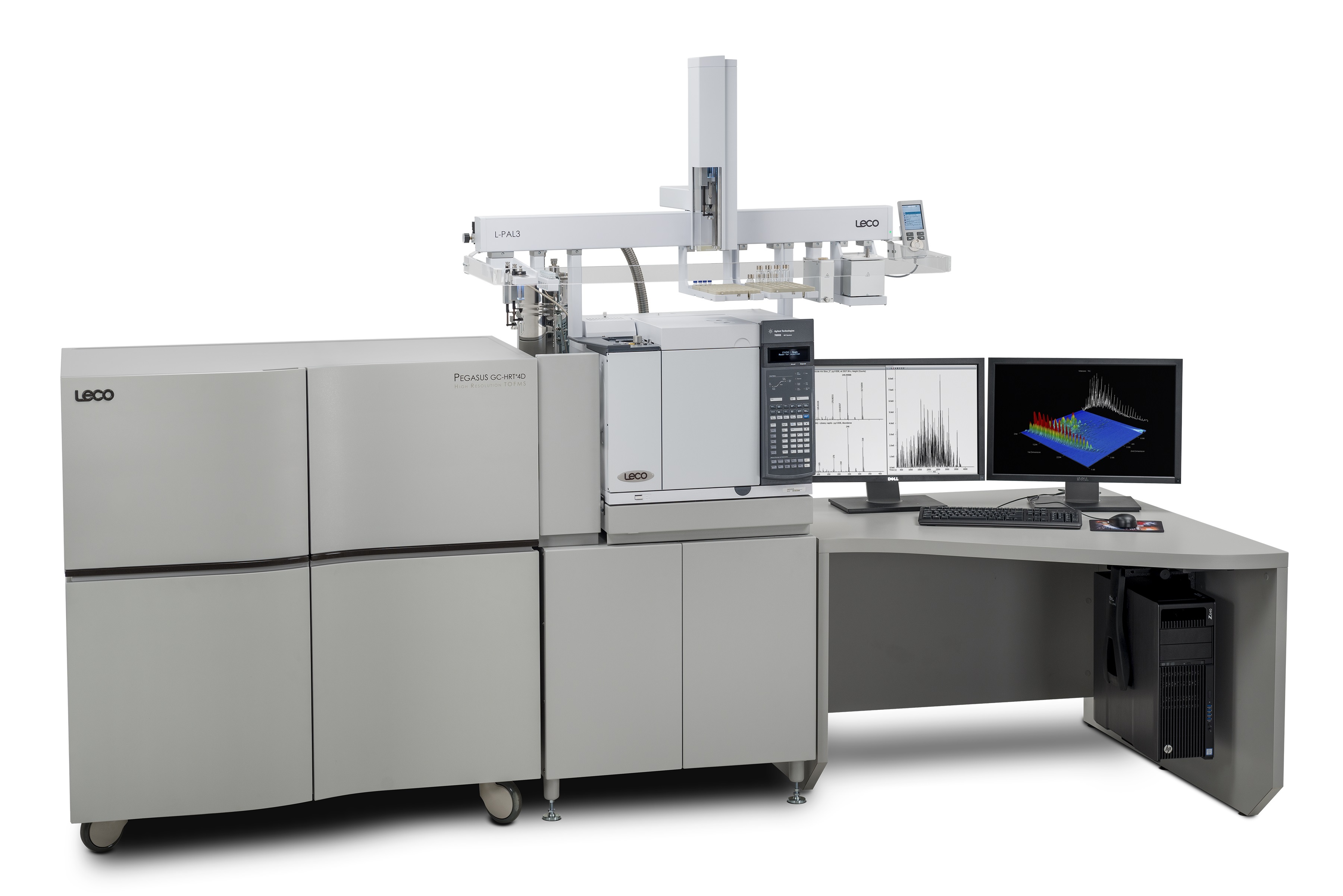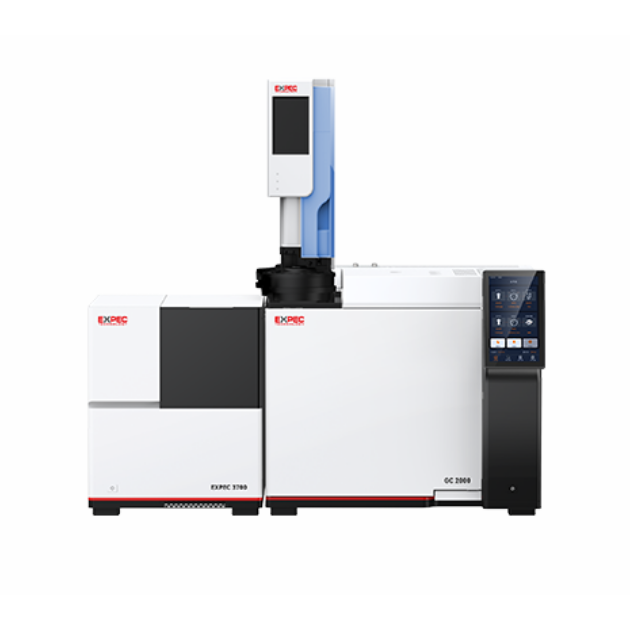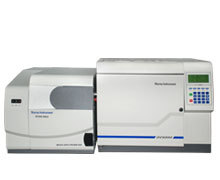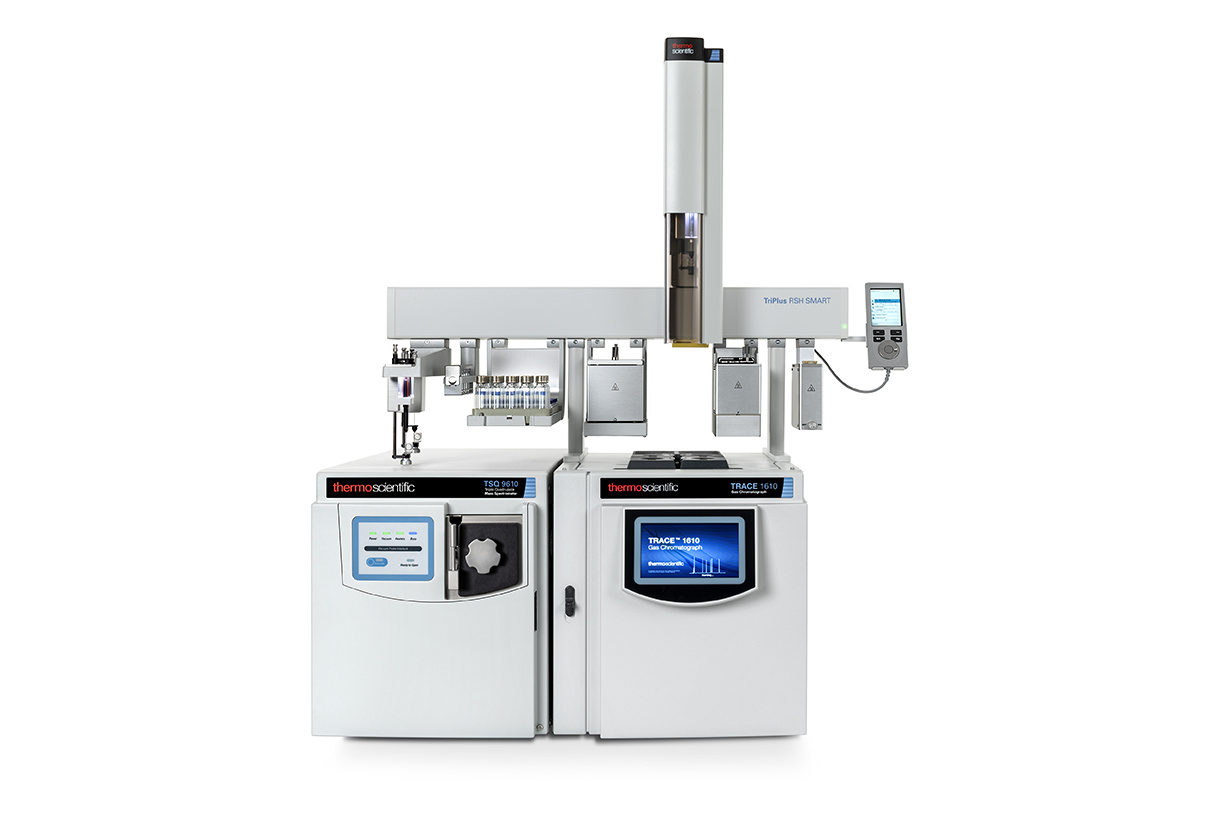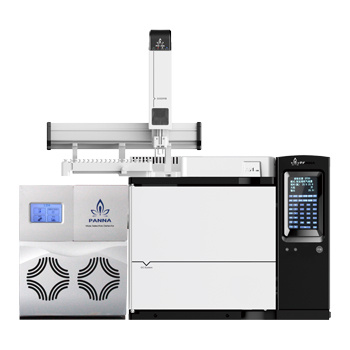GCxGC拥有更高的分离空间,可以有效解决组分共流出问题,获得更加干净的质谱图,提升定性定量可靠性。高分辨TOF则提供了另一个维度的定性指标(碎片离子的精确质量),让我们可以对常规定性结果作确认或修正。
方案详情

LECO Corporation| 3000 Lakeview Avenue | St. Joseph, Ml 49085| Phone:800-292-6141|Fax: 269-982-8977info@leco.com·www.leco.com|ISO-9001:2008|HQ-Q-994| LECO is a registered trademark of LECO Corporation.8/15-REVOForm No. 203-821-495C 2015 LECO Corporation @ 0 Improved Identification of Brand-Distinguishing Analytesin Perfume Samples with GC×GC and HR-TOFMS Key Words: Pegasus HT, Pegasus 4D, Pegasus GC-HRT 4D, Perfume Analysis 1. Introduction Sample differentiation is important in the perfume industry, and distinguishing samples and their individual analytes canhelp maintain quality control, aid process optimization, and drive product development through competitive analysis andbrand awareness. These analyses are often done with non-targeted analytical methods, such as gas chromatographywith mass spectrometry (GC-MS) because targeted approaches typically yield insufficient analyte coverage to fullyunderstand the samples. GC-TOFMS is a powerful analytical tool for characterization and additional analyticalcapabilities, such as GCxGC and HR-TOFMS, provide an even greater amount of information for an analyst to determinewhat they've been missing. GCxGC pairs an additional complementary separation to improve the chromatographicseparation of first dimension coelutions. High resolution TOFMS adds another layer of information to the analysis withaccurate mass data that are used for definitive formulae determinations and confident analyte identifications. Brand andimitation perfumes were analyzed and compared with GC-TOFMS, GCxGC-TOFMS, and GCxGC-HR-TOFMS. Theseanalytical technologies together offer a comprehensive picture of the perfume samples and the ability to distinguish andconfidently identify differentially expressed analytes, including many with important odor characteristics, some that werechallenging to separate with a one-dimensional separation, and others that were difficult to identify without HR-TOFMS. Figure 1. Perfume samples were analyzed by GC-TOFMS, GCXGC-TOFMS, and GCXGC-HR-TOFMS. Each platform added analytical capabilities which led to anoverall increase in separated and confidently identified analytes. 2. Experimental A brand and two drugstore imitation perfume samples were analyzed by GC and GC×GC coupled to TOFMS,and also with GCxGC coupled to high resolution TOFMS (GCxGC-HR-TOFMS). The samples were dilutedin ethanol prior to injection and analyzed by LECO's Pegasus HT, 4D,and GC-HRT 4D with the instrument conditionslisted in Table 1. Table 1. Instrument Conditions GC Agilent 7890 with MPS2 Autosampler Injection 1uL, splitless @ 250℃ Carrier Gas He @ 1.0 ml/min, Constant Flow Column One Rxi-5ms, 30m x0.25 mm i.d. x0.25 um (Restek) Column Two Rxi-17SilMS, 1.20 mx0.25 mm x0.25 um coating (Restek) Temperature Program 40℃ (2 min), to 280℃ @ 5℃/min (10 min) Secondary oven maintained +15℃ relative to primary oven GCxGC Add dual stage quad jet modulator Carrier Gas Add pressure corrected constant flow Modulation 3 s with temperature maintained +15℃ relative to secondary oven Mass Spectrometer LECO Pegasus HT/4D or Pegasus GC-HRT 4D Transfer Line 250℃ lon Source Temperature 250°C HRT Acquisition Mode High Resolution,R=25,000 (FWHM) lonization Mode El Mass Range (m/z) 33-500 Acquisition Rate 20 spectra/s (100 spectra/s for GC×GC) 3. Results and Discussion Hundreds of analytes were detected and identified within the perfume samples, many with important odorcharacteristics and differential expression between the brand and imitation samples. Esters, aromatic species,terpenes, oxygenated terpenes, and phthalates were all observed and many had differential expression betweenthe brands. This type of analysis gave insight to the similarities and differences between the brand and imitations,and a great deal of information was gained with the GC-TOFMS data alone. Even greater insight was uncoveredwith each additional analytical capability. GC×GC offered better sample characterization and detection of moreindividual analytes with chromatographic separation for first dimension coelutions that exceed deconvolutioncapabilities. The addition of HR-TOFMS added more confidence in identifications and improved identifications ofthese separated analytes with accurate mass information. Specific examples are shown in Figure2-5. Figure 2. With GC-TOFMS, cinnamyl alcohol perfectly coeluted with one other analyte and only a single peak was determined. This coelution exceededmathematical deconvolution capabilities and the MS spectrum for the single peak was the combination of both analytes (Figure 3). The improvedseparation with GCXGC led to the detection and identification of an additional analyte, undecanal.The differential expression between the brand and ( imitations, demonstrated in the GCXGC-HR-TOFMS data, shows that important information was hidden within the GC-TOFMS data. ) @ Figure 3. Improved separation with GCXGCand accurate mass information with HR-TOFMS gave more confidence in the identification of both cinnamylalcohol and undecanal. The GC-TOFMS cinnamyl alcohol spectrum contained m/z from the perfect coelution, undecanal. This led to a lower overallsimilarity score. GC×GC chromatographically separated these two analytes in the second dimension and provided individual peaks and spectra for each.This analytical capability added information for undecanal and improved the similarity for cinnamyl alcohol. The identification was further supported with formulae determinations from accurate mass data generated with HR-TOFMS. Figure 4. A differentially expressed analyte was found and initially identified as 1-(1-oxobutyl)-1,2-dihydropyridine on all of the analytical platforms.The similarity scores were 801, 815, and 834 on the Pegasus HT, 4D, and GC-HRT 4D data, respectively. 一Y 10008006004002000 1000800600400200 0 :1-(1-oxobutyl)-1,2-dihydropyridine Library Spectrum, Hit #1 SE8L: 10008006004002000 M/Z 40 Formula Obs. Mass Calc. Mass Mass Accuracy (ppm】 299.80 Formula Obs. Mass Calc. Mass Mass Accuracy (ppm) CgH13NO 151.14446 151.09917 C11H18 150.14040 150.14030 0.65 C,HNO 150.14040 150.09134 135.11659 135.11683 -1.72 C,H13N 135.11659 135.10425 C,H13 121.10109 121.10118 -0.74 C,H13 121.10109 121.10118 C8H11 107.08561 107.08553 0.75 CgH11 107.08561 107.08553 0.75 C,H。 93.06988 93.06988 C,H, 93.06988 93.06988 -0.01 CHO 85.06478 85.06479 -0.16 C5H0 85.06478 85.06479 -0.16 CH,O 71.04907 71.04914 -1.06 CH,0 71.04907 71.04914 -1.06 C,H, 67.05422 67.05423 -0.12 67.05422 67.05423 -0.12 Figure 5. The nominal mass fragments for the first library hit aligned very well with the observed data. This identification was precluded, however, by theaccurate mass formula determinations. m/z 151 and 150 had extremely poor mass accuracy values with the initial proposed formulae, C,H,NO andC,H,NO. A formula calculation determined that these masses were better explained by C,,Hi and its 13C isotope. This improved formula led to a differentidentification with a lower library similarity, but far better mass accuracy. The improved identification had different odor characteristics than thepreliminary identification, providing a different and better interpretation of this difference between the samples. These identification candidates hadretention index of 1231 and 1181, which were not different enough to definitively adjust identifications from retention time alone. 4. Conclusion This study demonstrates the benefits of LECO's analytical platforms for characterization and differentiation ofperfume samples to see what you are missing. Three commercial perfume samples were analyzed with GC-TOFMS,GCGC-TOFMS, and GCXGC-HR-TOFMS. The detection and identification of various esters, aromatic species,terpenes, oxygenated terpenes, and phthalates within the GC-TOFMS data provided information con th laritiesand differences between the samples. The addition of GC×GC and HR-TOFMS analytical capabilities offered an evenbetter understanding of the samples. A complementary separation dimension with GC×GC led to the detection ofmore analytes in the sample by chromatographically separating first dimension coelutions in the second dimension.Analytes with important odor properties were detected by GC×GC that were missed with the GC separation.The further addition of HR-TOFMS gave improved confidence in the identifications of the separated analytes. Someinitial library matches were confirmed with HR-TOFMS data and others, even with good similarity scores, were ruledout based on the poor mass accuracy with the proposed formulae. Better formulae and identifications were proposedusing the accurate mass information leading to a greater understanding of the samples. These tools allow a user toconfidently discover even more about their sample. LECO, Pegasus are registered trademarks of LECO Corporation.
确定
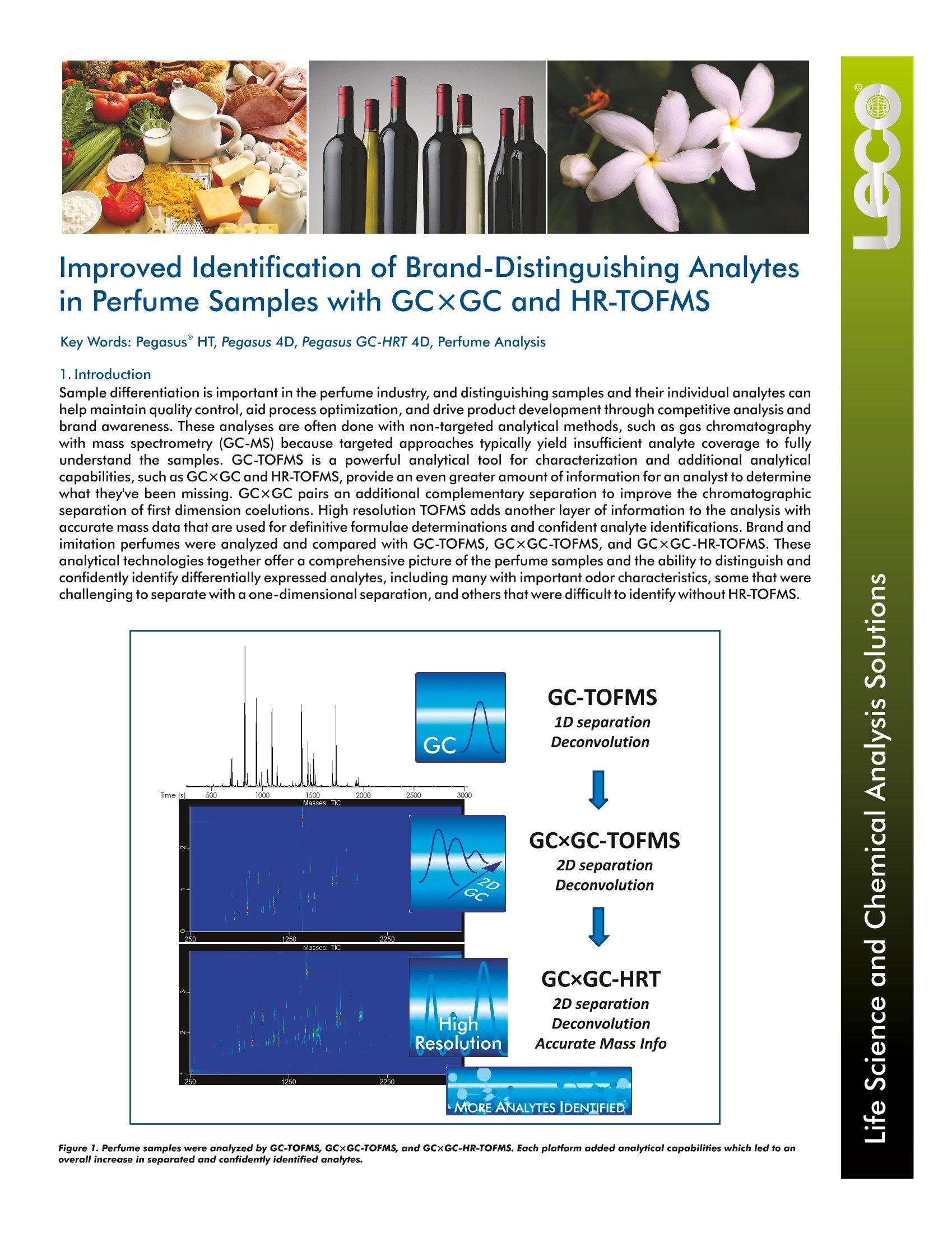

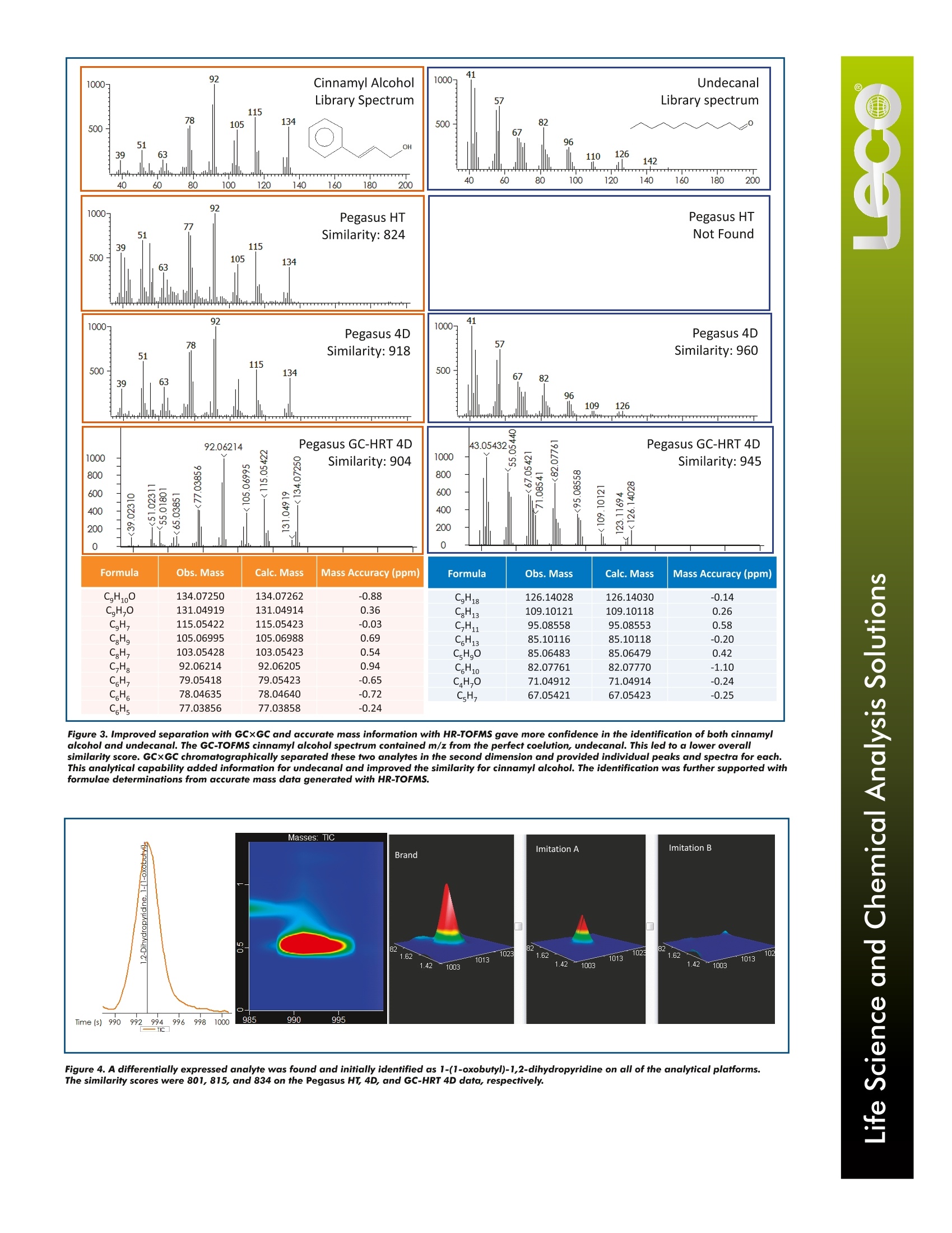
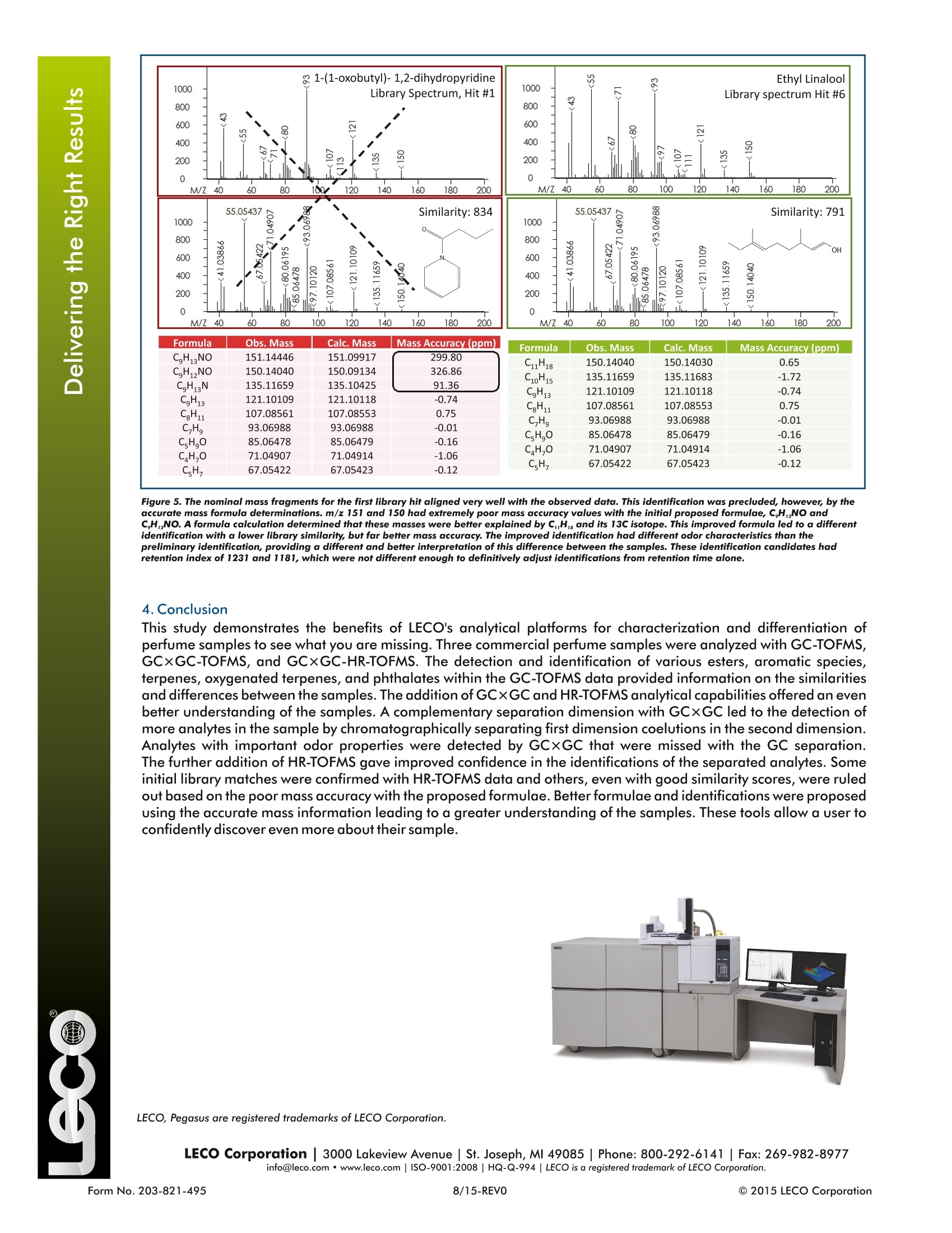
还剩2页未读,是否继续阅读?
美国力可公司为您提供《香水中成分分析检测方案(气质联用仪)》,该方案主要用于美容/修饰类化妆品中成分分析检测,参考标准--,《香水中成分分析检测方案(气质联用仪)》用到的仪器有全二维气相色谱-高分辨高通量飞行时间质谱
推荐专场
相关方案
更多

